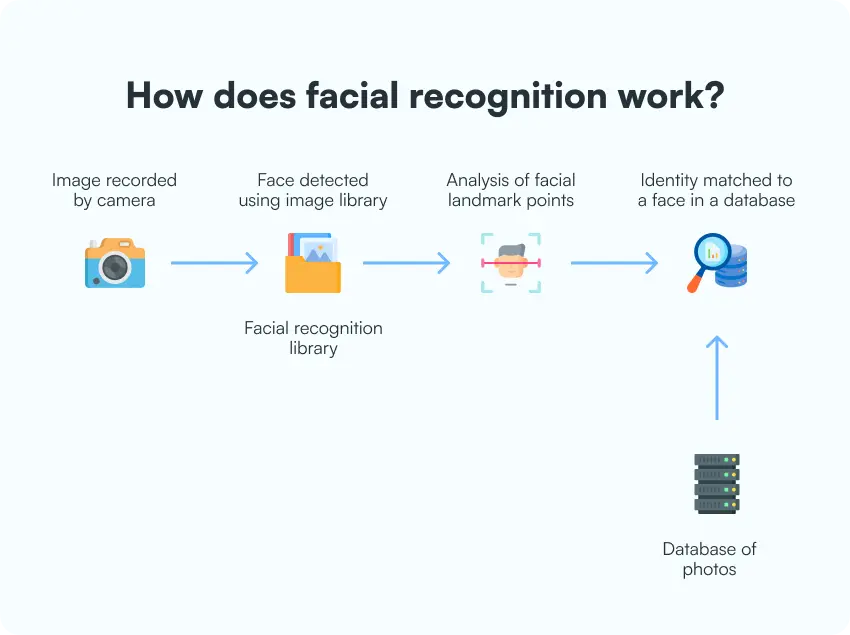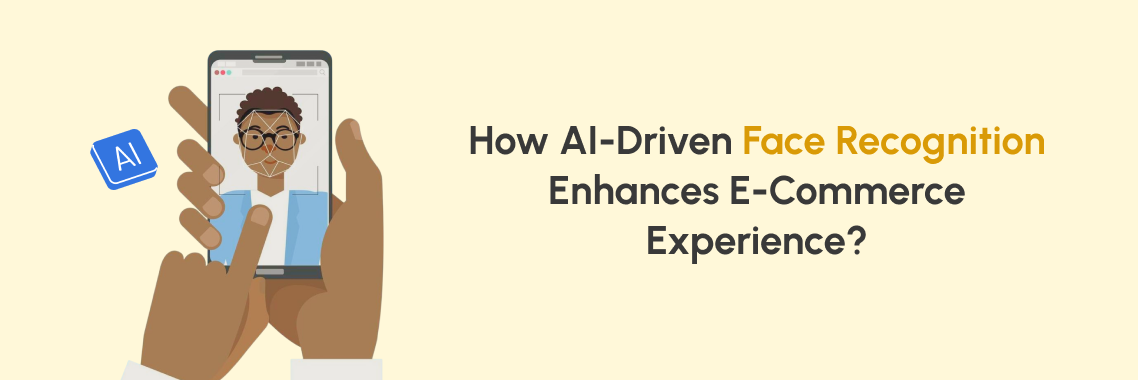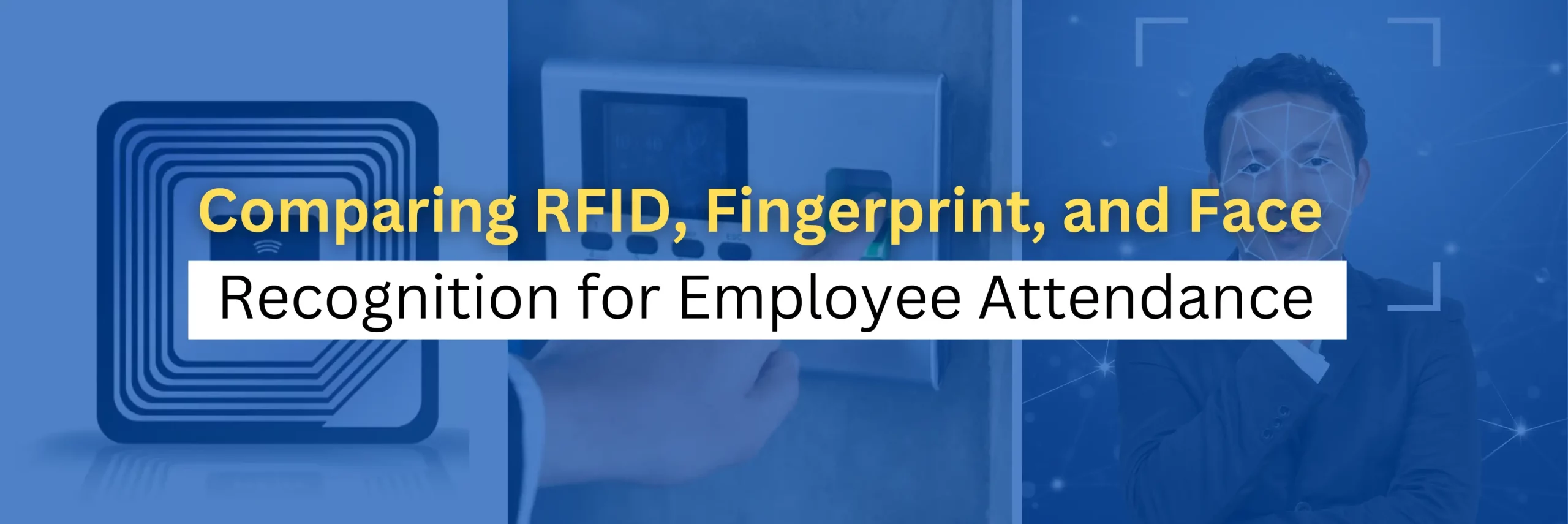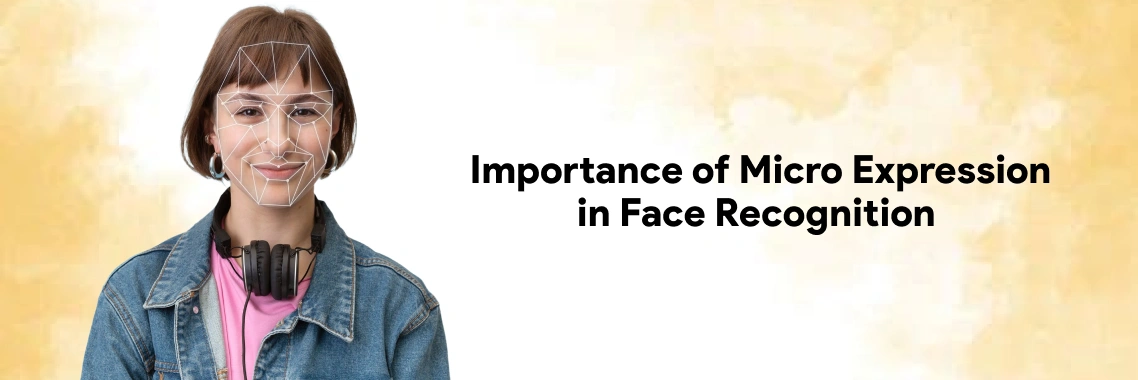AI in Face Authentication
Not gonna exaggerate: When I first got my smartphone and received an amazing feature where I didn’t need to draw a pattern or remember a complex password to unlock my phone, I got intrigued.
I was fond of it and started playing to explore whether it could really match my face to unlock if I wore a little more makeup and looked slightly different, or if it could work in a gloomy light shade.
Oh! Surprisingly, it caught my heart! Then, it became very obvious to me to know how it was even possible and I got to know the whole BTS (Behind The Scene) is expertly handled with AI.
But how? Maybe you want to know just like me! Then, you’re on the right track as this blog is on the way to unveiling the precise functionality and exceptional potential of AI in face authentication.
The Steps for Facial Authentication & The Role of AI within It
The AI-based facial recognition algorithm follows a series of steps to maintain smooth functionality, stay efficient, and perform utmost surveillance.
However, before explaining the series, let's take an example of a facial attendance app named Lystface to understand the AI-based application of facial recognition technology from a business perspective.
If you opt for Lystface, you can cut down on monotonous attendance with manual intervention for your employees and automate the process of tracking in and out time. Not only that, but you can also smartly provide a seamless automated experience of payroll processing, leave management, and data insights for your employers so that your employees can feel a trustworthy environment.
Now, let's get to know how the facial recognition technology works with the help of AI in real-time to serve you a smoother experience:

✅ Face Detection
The step begins with either capturing a single facial image, multiple facial expressions in one frame, or with a video. For example, if you’re clicking on the Lystface facial attendance app, it will start detecting you while AI will work on the following:
- Mimicking human patterns based on facial structure, pose variation, etc.
- Handling complex backgrounds irrespective of the resolution and angle of the image.
- Making itself adaptable to various lighting conditions.
✅ Feature Extraction
Once your face is properly detected in the app, its built-in AI jumps into the next process of analyzing your facial features, including shape, skin tone, expressions, and aging. It minutely assesses the contour of your jawlines, lip structure, the gap between your beautiful eyes, and more details to pinpoint and extract relevant information.
Here, AI mainly works to identify distinctive facial appearances to collectively build a unique facial identity. Moreover, the normalization and consistent feature extraction with accuracy in this stage let AI enhance the reliability of comparing facial variations.
✅ Face Matching
After completing the analyzing process, the AI doesn’t delay to work on the digital representation of your face, which you may call your facial signature. Here, your extracted facial features are encoded into a facial feature vector so that AI can compare it with existing databases and authenticate you if there is no bloated or tampered data.
In this stage, AI serves to compare facial signatures, seeking original matches based on similar patterns. Face matching and recognition by AI opt to utilize deep learning models to contribute to the result with higher accuracy, for which continuous feeding and updating AI with a handful of data is mandatory.
Applications of Face Recognition AI that No One Can Underestimate

Jan’s words hit the nail on the head, and that's enough to express why facial recognition AI is making waves everywhere. Here are some of the impactful ways it’s revolutionizing the world: Discover more as you explore further!
Securing Multiple Systems
Whether it’s your handy smartphone or the door access control to your house and office, AI-based face authentication provides a secure and convenient user experience. You’ll also find it in airports, hotels, banks, and any other high-security zones where verifying identity is a must. This means AI-powered facial authentication offers an extra layer of security from indoors to outdoors with precision.
Recommendation in Social Media
From Facebook to Instagram, and LinkedIn to Twitter, facial recognition AI is transforming how you experience social media. It’s used to provide personalized content recommendations, seamlessly connecting you with content from your favorite authors. By recognizing the faces you already like, AI continuously suggests relevant posts, making your social media experience more tailored and engaging than ever!
Enhancing Personalized Customer Service
AI-based facial authentication goes beyond enhancing security and social applications. It’s also elevating personalized customer experiences while digitally verifying customers while AI algorithms do an eagle-eyed analysis of customer behavior, their choices or preferences, and understand their buying psychology before diving into a recommendation.
From hotel bookings to retail stores to healthcare, facial recognition algorithms now offer personalized greetings, discounts, amazing shopping experiences, and even personalized diagnosis recommendations that customers are seeking for and easily retain them back.

Attendance Monitoring
Not only in corporate sectors but also in schools, colleges, and other non-corporate institutions, that are filled with a huge number of people, maintaining their attendance isn’t simple. But when it comes to tracking this attendance record with a facial recognition-based attendance system, the hectic wave with a magic wand.
For instance, Victoria’s Department of Education has implemented this technology to monitor student whereabouts. Additionally, they use it to automate book-lending management and other on-campus facilities as well.
Increasing Learning Engagement
Last but not least, one of the most unique applications of facial recognition technology with AI is analyzing students’ engagement in a thorough learning process. Researchers have found that analyzing students’ facial microexpressions, like raised eyebrows or tightened eyelids, can reveal emotions such as boredom, confusion, delight, frustration, and surprise. This insight can be invaluable for professors and curriculum designers.
For example, during a lecture, a professor can assess the emotional state of the attendees, identifying which parts of the lecture spark interest and which fall flat.
As insights on student engagement roll in, faculty can adjust the curriculum to better reflect student preferences, providing a more tailored learning experience. And, today, various universities are experimenting with this technology.
The Future of Face Authentication will Remain Intense Just Because of Using AI
The magic of AI and its algorithm in trending face recognition technology is no longer hidden from us, as it continuously transforms our daily lives to make them more secure and convenient with less time-consuming and easier practices. Whether it's used by us for personal uses, like in smartphones, or by any business or government bodies, the depth of AI-based facial authentication is undeniable.
However, ethical considerations in safeguarding sensitive information can save us from privacy concerns. For this, ongoing updates and continuous deep learning of AI can make facial recognition a more secure and robust platform.
So, it’s needless to say that AI has immense potential to consistently transform the future applications of facial recognition!






